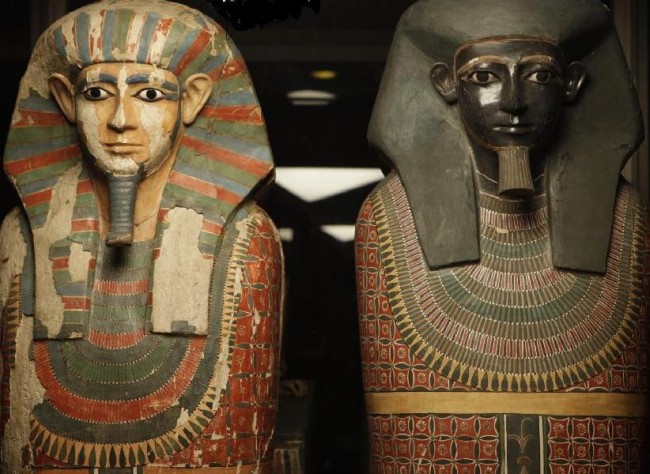The two ancient mummies which were previously thought as original brothers are not actually original brothers rather they are half-brothers. The latest study has revealed that the Two Brother mummies have different fathers but same mothers. The mystery behind these two brother mummies has finally been cracked, and it has been confirmed from DNA sequencing that the two brother mummies have different fathers.
Initial research suggested that the pair of brother mummies had same fathers but when the researchers deeply analyzed the mummies and applied advanced next-generation DNA sequencing on them they found out that the mummies do not belong to the same father. The two mummies were discovered in 1907 and the research suggests that they date back to about 1,800 BCE. The burial site of the mummy pair, called The Tomb of the Two Brothers, was discovered near Deir Rifeh, a village about 402 kilometers south of Cairo.
A team led by British archaeologist Flinders Petrie discovered those mummy bodies that were buried side by side. After the discovery, the mummies were sent to Manchester Museum and then after one year, that is, in 1908 the mummies were finally unwrapped for analysis. The researchers found out that the two brother mummies belong to two Elite Egyptian men, Khnum-nakht and Nakht-ankh. Initially, the hieroglyphic inscriptions on the mummy coffins indicated that both the brothers Nakht-ankh and Khnum-nakht were the sons of the same unknown Egyptian local governor and they had a common mother, named Khnum-aa. Hence, everyone started believing that the ancient pair of mummies were original brothers. But in 1908, when archaeologist Margaret Murray analyzed the skeletons of the two mummies, she detected that the skeletal morphology of the Two-brother mummies were different. So, she suspected that the mummies might not have a common father.
Since then, the mummies have kept the scientists baffled. Whether the two brother mummies were full siblings remained unclear. Some thought that one of the two brother mummies was adopted. Later in 2015, the research team led by Konstantina Drosou at the University of the Manchester decided to analyze the teeth( molars) of the mummies by applying advanced next-generation DNA sequencing. The researchers analyzed two molars from Nakht-Ankh and three from Khnum-Nakht. When they studied the mitochondrial and Y chromosome factors, they found out that the two brother mummies belong to the mitochondrial group haplotype M1a1. The haplotype M1a1 group of genes are inherited only from Mother because, egg cells, but not sperm, contribute mitochondria to an embryo. Hence, scientists concluded that the two mummies belong to the same mother.
The researchers also found variations in some of the Y chromosomes which indicated that the mummies had different fathers. Comparisons between six regions of the Y chromosome indicate that possibly they have a different father,” Drosu said. Drosou concluded that they have solid genetic proof that backs up the hieroglyphics, which define the brothers by their mother’s name and not the father’s name.
